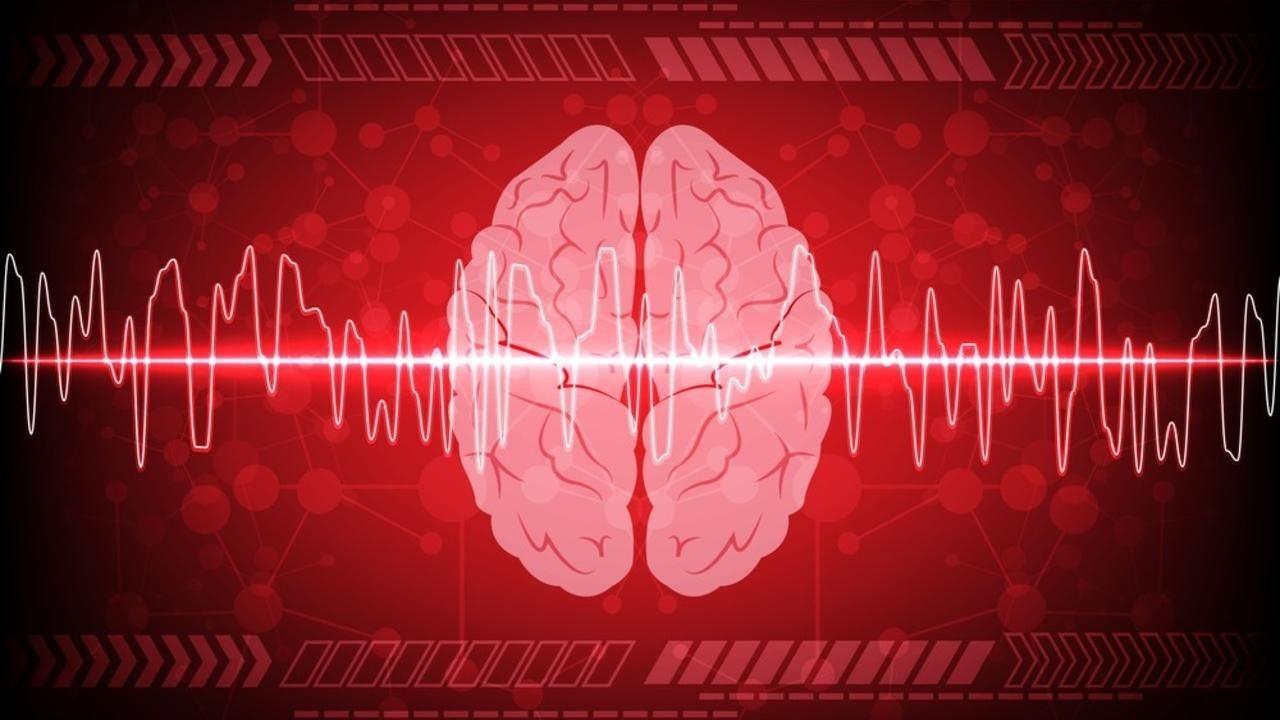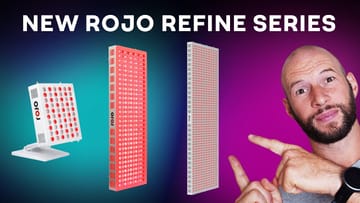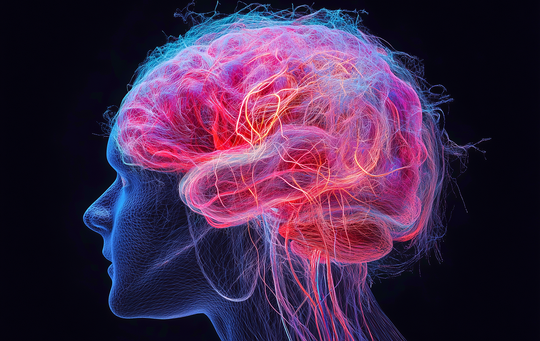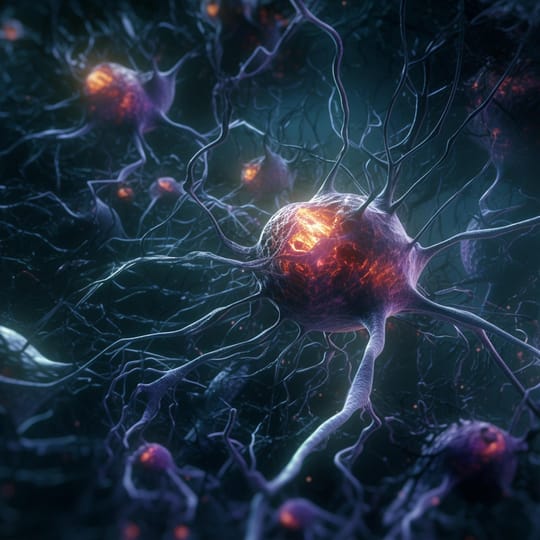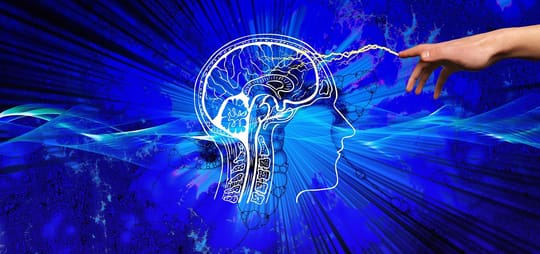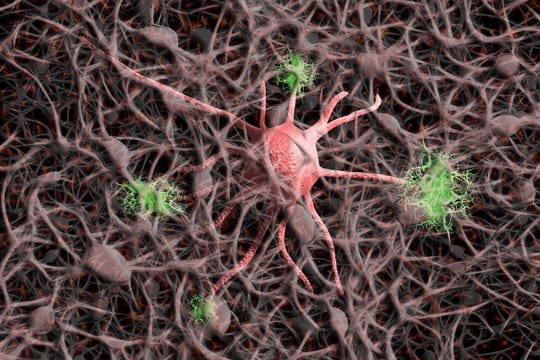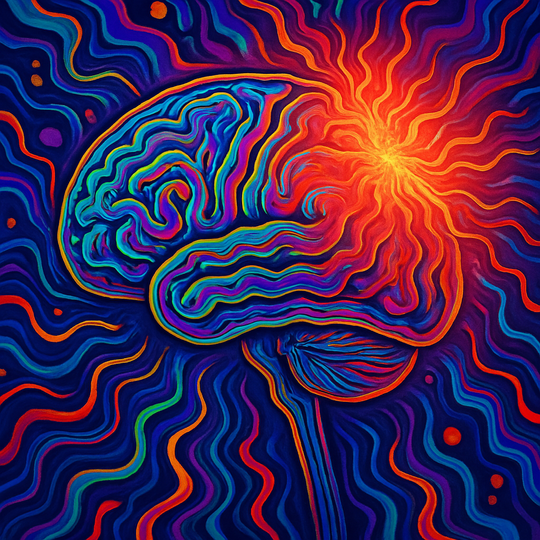So in this blog post, I'm updating a previous version on red light therapy for brain health that was written a few years ago on the Alex Fergus website. Tons of research has emerged in the last few years on red light therapy for brain health - such as new studies on Alzheimer's, Parkinson's, cognitive performance, and many other domains.
Today I'll dig into that topic. But let's first talk about red light therapy for the brain dosing. That section on dosing was written on the original Alex Fergus by Aedhán Castiel, a writer we hired back then. I quote - and I've slightly edited the work to make it adhere to the current literature.
Also, if you want to skip straight to the science on many of these topics, check the table of contents at the left side of your screen. With that table of contents, you can straight go to the science on red light therapy for cognitive performance, or for dementia or traumatic brain injury, for instance!
- Red light therapy dosing for the brain is really tricky, but, because of the skull blocking lots of light, power outputs of up to 250 mW/cm2 has been shown to work really well in different studies. That power output is locally applied, so not across the entire brain, though. Nevertheless, it does show that very high power outputs work, even if applied locally, to help light arrive at the brain through the skull.
- The levels of evidence of red light therapy for the brain varies for different purposes. Examples of areas with very good evidence are Alzheimer's Disease, cognition, depression, and anxiety. Other domains such as Bipolar Disorder, Multiple Sclerosis, and Parkinson's Disease have less of an evidence base but still extremely promising results.
- It's hard to give out one-size-fits-all recommendations for red light therapy for brain health because study setups are so different. The best you can do is to get a device that's brain-specific and proven itself in many studies, such as the Vielight, the Neuradiant 1070, or get a high-powered panel. Especially in case of brain disorders, however, you'll have to start slow as people may get side effects. Also, in case of brain disorders, I recommend seeking out a medical professional and having them guide you in the process.
- A combination of different near infrared wavelengths is probably best, such as 810nm, 1,064nm, and so forth. What wavelengths have the best level of evidence varies slightly across the different goals for the brain, however!
- In the upcoming year, I'll write many more deep-dive articles for different goals, such as Alzheimer's or anxiety, and give more specific recommendations in these articles.
- Overall, red light therapy for brain health is extremely promising and there are positive results across the board, almost, with few if any side efffects!
First up, let's explore the problematic topic of dosing though:
Practical Applications of Red Light Therapy for Brain Health: The Problem Of Dosing
(This section, "Red Light Therapy For Brain Dosing", is written by Aedhán Castiel,)
Here, I'll do a deep dive in using red light therapy for the brain. I'll specifically look at what studies state so far about red light therapy for cognitive performance, mood enhancement, overall brain health, and more.
But guess what?
One big issue many people have is that they don't know how to precisely dose their red light therapy sessions for brain health (& more)
Just think about this:
If you've got a random red light therapy panel from Platinum LED, Rouge, Mito Red, Rojo or Block Blue Light, do you know whether you should use that panel:
- for 2 minutes, or 6 minutes, or even 20 minutes per session?
- at a 6-inch distance, or at 12-inches, or should you stand as close to the panel as possible?
- should you use a panel at all, or rather a device specifically created for treating the brain such as the Vielight Gamma?
In this blog post, you'll finally find out!
In fact, when discussing the science I'll go in-depth into dosing numbers but I'll promise to break those down into easy-to-understand principles.
Note: If you aren’t already familiar with the benefits and science behind red and near-infrared (NIR) light, start with Alex’s excellent comprehensive overview HERE!
My Experience With Red Light Therapy
My own very first introduction to the benefit of red and NIR light was Ari Whitten’s Ultimate Guide To Red Light Therapy And Near-Infrared Light Therapy. Ari published the first book on red and NIR light intended for a general audience.
Ari's book, and the article, go in-depth discussing the proper dosing strategy. He also emphasizes that in addition to getting no benefits if you dose too low, you can also lose the benefits by dosing too high (1).
So the perfect dose is like a golden mean between a high and low dose. In biology, that principle often applies. Just think about how both low and high protein intakes are bad, or low and high levels of nutrients such as calcium and magnesium.
But back to Ari:
The benefits his work focused on were mainly fat loss, strength performance and muscle recovery, immune system health, inflammation, and so on.
But the benefits I, personally, was most intrigued by were improved mood, better brain health and cognitive performance, and a reduction in symptoms of depression and anxiety.
Neither of these articles discussed the proper dosing strategy for the brain. As we’ll see, there are good reasons why they didn’t. It gets complicated applying red light therapy to the brain real quickly!
Why?
In addition to needing to penetrate through layers of fat and skin, the light also has to penetrate through the skull to reach the brain.
This obviously means NIR has a better chance of working for the brain than red light. Especially NIR in the range of 650 to 950nm:

Source— Research Gate
How should you dose NIR light to benefit the brain?
Short answer: the best answers we can give for now involve a lot of guesswork.
Here’s why.
- “Power density” refers to how intense the light a NIR device spreads over a given area is. It’s a measurement of the strength of the dose delivered by that device. Power density is usually measured in milliwatts per centimeter squared (mW/cm2). We measure the total dose delivered by a session, or “energy density,” in Joules (J)—and the dose to each area in J/cm2.
- J/cm2 is calculated by multiplying W/cm2—to get W/cm2, just move the decimal on your mW/cm2 value three places to the left—by the treatment time as measured in seconds.
- This means if you know the power density and treatment time, you can calculate the energy density of a treatment.
- Or, alternatively, if you know the power density and energy density, you can calculate the treatment time. This is useful to know when you start looking at studies that don’t report all the information clearly.
- We can easily measure the Joules a device delivers to the first surface it touches—say, to the surface skin of your forehead. But how much does that mean we’ve delivered to your brain?
We don’t know, and it depends.
How?
Well, first, on the power density of the device. The light that hits your forehead needs to travel through quite a bit of skin and bone in order to reach your brain. The more powerful the device is, the more light is likely to penetrate and reach the brain.
(Fortunately, many red light therapy manufacturers provide you with some info on the power density of their device at different distances!)
But the power density of your device will probably differ from the power density of the device used in a particular study. And your skull is probably different in thickness and density from the skulls of the subjects in any of these studies, too.
In general, the less thick and dense the skull is, the more light will reach the brain. But significant questions remain unanswered.
Is the relationship between power density, or skull thickness, and light delivered to the brain linear? In other words, if you cut the power density of a light in half, or double the skull thickness, does that cut the light reaching the brain by half?
Do you need more red and NIR photons? Less? The answer is simple: we don’t know yet...
Let me explain:
Why Dosing Red Light Therapy For The Brain Is Currently Problematic
Let's take an even deeper dive into the limitations of current studies:
Imagine a study that found that for middle-aged men, delivering 30 Joules to the forehead from a device putting out 50 mW/cm2 was ideal for improving cognitive functioning.
If a young girl used a 50 mW/cm2 device to deliver 30 Joules to her forehead, this might result in a substantial overdose.
Why? Because a much higher dose is actually reaching her brain through her thinner skull.
Alternatively, think about if you tried to replicate these results with a device putting out only 1/10th of the power of the device used in the study: 5 mW/cm2 instead of 50 mW/cm2. Will you get the same results by using the device 10x as long, to deliver the same 30 Joules to the forehead?
Here's the problem:
That approach assumes that 1/10th of the amount of light is reaching the same brain tissue. But what if a 5 mW/cm2 device isn’t enough to penetrate through your skull and reach your brain at all? Then it wouldn’t matter how long you used the device or what dose you applied to your forehead.
It’s also unclear at present whether the light actually needs to touch your brain in order to benefit mood and cognition. In other words, do you need to put the device right against your skull to get results or can a distance of a few inches with a higher power density be maintained?
There’s a hypothesis that there are cells near the surface of the head that can carry the benefits of NIR irradiation down into the brain. Irradiating the blood that is flowing into the brain might carry some benefits to the brain as well.
So, I’m going to look through some studies and pay attention to the power density of the devices they used, and the total energy they delivered to the forehead or scalp.
But what really matters is—probably—the energy delivered through the skull to the brain itself. And what if it isn’t just a matter of reaching the brain, but even the aim of reaching specific parts of the brain? In that case, devices with different power densities might impact different regions of the brain altogether.
Ultimately, we need more research to make confident recommendations here.
To summarize, we need a better understanding of:
- Whether the amount of light contacting the brain is what matters to begin with
- How much light travels through how much skull tissue at what power density. Note that methods are already being developed which may help us quantify this better soon (2).
- We may also need to find ways for the average user to estimate the thickness and density of their own skull in different areas (and measure the power density of the devices they’re using).
Until then, logically, recommendations can only be based on guesswork and estimates.
So I’ll look for studies that noted the power density of the devices they were using. I’ll also find the treatment time or energy density delivered to the scalp surface when possible. If your device has a lower power density, you should probably use it for longer.
If the device has a higher power density, you should probably use it for less time. The best you can do here is perform a calculation with your device to see how long it would take to reach the same energy density.
(Comment Bart Wolbers: also check out Alex Fergus' video on red light therapy dosing, to understand what a complex issue this is:
I hope that video makes it clear that universal dosing guidelines aren't easy! Now back to Aedhán Castiel below:)
Now that you understand the issues with current red light therapy for the brain studies, let's move on to some specific studies that have been analyzed already:
Criteria For Analyzing Dosing Studies
I’m going to consider only human studies for this particular topic. If a rat study finds cognitive enhancement from a certain light, its power density may be penetrating the rat’s entire brain, while barely touching the surface of a human’s—if at all.
Again, we don’t know what power density it would take for a light to penetrate an entire human brain in the same way.
Once I narrow down to:
- Human, not animal or cell studies
- That measured cognitive or mood benefits
- While clearly noting power and energy density (or treatment time)
After applying those criteria, we’re dealing only with a small number of studies compared to the vast body of research on red/NIR. Many studies just don’t clearly record the specifications of the lights they used.
And then there's another issue;
Why “Weak” Lights Appear To Be Effective
Here's my conclusion based upon several studies:
At the lowest part of the dosage spectrum, one study found 6.4 mW/cm2 for 20 minutes (for 7.68 J/cm2) improved brain blood flow and cognitive functioning in veterans with chronic Traumatic Brain Injuries. Another case study found that a patient in a vegetative state improved enough to begin moving his arm and hand to reach a tube after therapy with 11.4 mW/cm2 delivering 20.5 J/cm2 in total (3; 4).
So at that the lower end, benefits appeared with a device with 16.67mW/cm2 power density delivering 20 J/cm2. This study found that reaction time in healthy subjects treated with NIR improved by 23.8 milliseconds. Patients with chronic traumatic brain injuries also saw improvements from a 22.2 mW/cm2 device delivering 13.3 J/cm2 to the scalp (5; 6; 7).
Additionally, studies of the Vielight Neuro devices show that a 41 mW/cm2 power density delivering 24.6 Joules to the scalp (and 23 mW/cm2 delivering 13.8 Joules intranasally) is effective at improving cognition in patients with mild to moderately severe Alzheimer’s (8).
Lastly, note that Alex’s test of different full-body panels found a minimum power density of 46 mW/cm2 in the devices that were tested—at a distance of 6 inches. This would imply that, as long as you increase your treatment time enough, almost any light should do something.
Next, let's look at the higher end of the spectrum in terms of dosages:
The Common 250 mW/cm2 Figure In The Medical Literature
Let's finally look at some results that we can work with:
The one number that shows up most often in the research is 250 mW/cm2 delivering 60 J/cm2
(You can reverse-engineer a treatment time of 4 minutes with those numbers: .25 W/cm2 * 240 seconds = 60 J/cm2).
Let's look at some results with those numbers:
8 Minutes of treatment with a 1064nm light using 250 mW/cm2 to deliver 60 J/cm2 brought the same benefits to attention in healthy subjects as cardio. Another study found improvements to healthy subjects’ executive function (which are related to higher-order cognitive capacity). One more study concluded that this treatment protocol protects brain function and mood in university students who would normally take a big hit to both because of stress (9; 10; 11).
Yet another study, moreover, confirmed that exposure to 250 mW/cm2 for 10 minutes (150 J/cm2) increased oxygen delivery to the brain. A pilot study of 10 subjects found that 4-minute treatments with a 250 mW/cm2 light significantly reduced symptoms of depression and anxiety (12; 13).
At least one study found that twice the energy density from this 250 mW/cm2 power density (120 J/cm2 instead of 60 J/cm2, or an 8-minute treatment) was also effective (14).
Overall, higher power densities lead to almost universal improvement across a spectrum of variables associated with brain health and performance.
My overall conclusion?
Let's find out:
Finishing Thoughts On Dosing: My Reflections On The Current State Of The Evidence
A wide range of settings, from 13 to 250 mW/cm2 delivering anywhere from 7 to 150 J/cm2 to the surface of the head, appears to be effective in delivering benefits to the human brain. In fact, a power density of 250 mW/cm2 delivering 60 Joules/cm2 is the most robust and well-replicated set of parameters.
Is more power better?
A greater number of studies currently examine a fairly high power density (250 mW/cm2). But we don’t have any studies comparing higher and lower-powered lights. Even with the same energy density, a higher-powered light might have more benefits by hitting deeper structures in the brain.
Or, maybe, how far the light penetrates the brain doesn’t matter at all!
Nevertheless, extremely good reasons to think NIR benefits the brain do exist. But it’s too early to be confident about prescriptions for the optimal dosing strategy.
The safest bet given the limited evidence we have so far is to aim as close to 250 mW/cm2 for 4 minutes (60 J/cm2) as possible.
My hope?
Future studies will hopefully elucidate:
- How much the penetration of light into the brain matters
- What power density it takes to penetrate through how much skull
- If and how the effects of NIR differ depending on what part of the brain it touches, both in terms of the brain structure and in terms of how deeply it’s penetrated
- How the variation in skull density and thickness between people influences the amount of NIR that makes it through the skull, and how to account for this when dosing
- When the power density or energy density of a treatment become high enough to “overshoot” the benefits and start producing harm.
Next up, let's move on to the topic that many people have been waiting for - red light therayp for specific goals, such as cognitive performance or countering pathologies:
The Impact Of Red Light On Brain Function - Including Neurodegeneration Conditions
In this section I'll consider different red light therapy for neurodegenerative diseases, among which, Alzheimer's Disease, Cerebral Palsy, epilepsy (technically not neurodegenerative but it's harder to categorize), Parkinson's Disease, and others.
Here's what I found in the scientific literature:
Alzheimer's Disease
Countless studies exist on mild cognitive impairment and the later full-blown Alzheimer's Disease (21; 22; 23). Alzheimer's Disease is a neurodegenerative disease that is characterized by "plaque" buildup in the brain and overall poorer cognitive performance.
The effect on mild cognitive impairment and Alzheimer's Disease (AD) seems to be strong (21). Multiple wavelengths used together also work better than a single wavelength for Alzheimer's (21). And, applying the light through the skull, with specialized equipment - such as the Vielight - works best (21).
Alzheimer's is a huge problem because the number of people with the condition doubles every five years (22). One of the areas light therapy may work in the future is by enhancing the brain's natural detoxification system during sleep. Researchers write:
"The lymphatic drainage and removal system of the brain (LDRSB) plays an important role in resistance to the progression of AD."
And then:
"We focus on emerging evidence that indicates the potential benefits of PBM during sleep for modulation of natural activation of the LDRSB at nighttime, providing effective removal of metabolites, including amyloid-β, from the brain, leading to reduced progression of AD." (22).
In the future, this approach may be highly promising. There's also evidence that 40 Hz pulsing may improve the effects for Alzheimer's Disease (24). The Vielight Gamma uses that approach currently.
Lastly, a review going over the evidence shows that 9/9 studies show improvements in memory, when red light therapy is applied with Alzheimer patients (25). Here's what the researchers say about dosing:
"One of the most common protocols for clinical populations employed devices delivering near-infrared light (810 nm), the irradiance of 20-25 mW/cm2, and fluence of 1-10 J/cm2. While this was common, the reviewed protocols also included other wavelengths of light ranging from visible, red (630-635 nm) to invisible near-infrared maximum wavelengths of 1060-1068 nm." (25).
So, for now, a combination of wavelengths, including the low 600s red, 810, and 1060nm seems best!
Helps Different Aspects Of Parkinson's Disease
Parkinson's Disease (PD) is another neuro-degenerative disorder (94; 95; 96; 97). The condition is characterized by movement problems, problems in daily life, sleep problems, and mental health issues. The dopamine system in the brain is affected in this condition.
It turns out that red light therapy for Parkinson's Disease works, although, much of the research has been carried out with specialized equipment (98; 99; 100). Red light therapy may help people with PD because of boosting mitochondrial function as well as lowering inflamamtion - two mechanisms by which PD creates problems (99). Red light therapy is also neuroprotective.
One piece of equipment that can be tried here is the Vielight. That device targets the so-called "Default Mode Network" that's also affected by Levodopa, medication taken to counter the motor control problems of PD.
A lot more research is needed in this area, however, but Vielight currently have a few clinical trials running with their devices! One problem here is that the dopaminergic regions affected by PD are located very deep in the brain, and are hard to reach with red light therapy devices (100).
Cerebral Palsy
Cerebral Palsy (CP) are neurodevelopment disorders that mainly affect movement (51; 52; 53). The onset occurs at an early age and often before birth. Many different risk factors exist and there's no universal one.
Not that many studies exist on this topic but they're generally positive (54; 55). Red light therapy may improve exercise recovery and performance (55). Generally, red light therapy is best for counteracting pain, helping people stretch, and improving the gains from workouts, even though best treatment guidelines for CP with red light therapy haven't been developed yet (54).
May Be An Aid In Epilepsy Treatment
Epilepsy is an extremely complex phenomenon that isn't completely understood. A few reviews have been published on this topic, that analyze existing animal studies (76; 77). The animal studies are promising but human research is currently lacking.
The animal research is very promising though, and experimentally, the aforementioned Dr Beck has used red light therapy for epilepsy in a clinical setting with great success. Reductions in seizures and the protection of neurons - making seizures less damaging - are two of the promises of red light therapy for epilepsy in the future.
May Aid In Multiple Sclerosis Treatment
Multiple Sclerosis (MS) is not just a condition that affects the brain but the entire central nervous system (86; 87; 88). The autoimmune condition is characterized by chronic inflammation, one of the key mechanisms affected by red light therapy.
Motor performance, which is often inhibited - especially if the MS progresses - improves with red light therapy to the brain (89). Not all dimensions of MS are affected though - fatigue may not be lowered by red light therapy (90). The latest review on red light therapy for MS also states that red light therapy may help control the immune response and avoid excess free radicals - these free radicals may create the neurological damage in the first place (91).
Overall though, a lot more research is needed on this topic. If you want a deep dive, consider the blog on Dr Terry Wahls' use of red light therapy for MS by our writer Peter.
Counters Inflammation Of The Nervous System (Neuroinflammation)
Many of the diseases have neuroinflammation in common. And, red light therapy counters neuroinflammation across the board, according to two recent reviews (92; 93). Here's what one of these studies states:
"The studies showed that PBM has anti-inflammatory properties in several conditions, such as traumatic brain injury, edema formation and hyperalgesia, ischemia, neurodegenerative conditions, aging, epilepsy, depression, and spinal cord injury" (92).
Most of the neuroinflammation research is based upon animal research though, not humans. Nevertheless this outcome is extremely promising!
Likely Helps Healing After A Stroke And May Help Prevent Them
Quite a few recent human studies investigate how red light therapy may aid healing after a stroke - with positive results (105; 106; 107). One recent review has also been published (108). These post-stroke red light therapy applications mostly use lasers, sometimes inside the blood vessels.
I won't give treatment recommendations here, as post-stroke treatments should certainly be guided by clinical professionals. The last few years there's been a ton of discussion about dosing for stroke recovery, as some trials showed poor results (108). More recent studies show improvements across the board, including cognition, movement ability, and emotional functioning with less pain (105; 106; 107).
Next up, red light therapy for stroke prevention has shown very good outcomes in animal studies. Two reviews have summarized the outcomes here (108; 109). Again, I don't want to give human recommendations here as it's a touchy subject - in general, I recommend using red light therapy for cardiovascular health, blood flow, and others, and I just recommend getting a panel that has high power output and many different wavelengths.
Check the shopping tool for options in that department, or check Alex Fergus' video on the best red light therapy panel. Furthermore, let's look at using red light therapy for brain injuries:
Red Light Therapy For Brain Injury
Brain injuries, such as traumatic brain injuries, are very common. Fortunately, red light therapy for brain injury is extremely promising - again, use a medical professional for treatment here, if you use red light therapy for this goal:
Countering Brain Injury, Such As Traumatic Brain Injury And Nervous System Disease
Brain injury is very easy to understand in theory: you hit your head, and you end up with an injury, such as a concussion, that sometimes has long-term effects (39; 40; 41).
Understanding the causes is simple, but treatment is where the difficulty begins. Younger people and older people are the most likely to get a Traumatic Brain Injury (TBI), for different reasons. For younger people, athletics or risk-taking is often the main cause, and for older people, it's falls or poor coordination.
Fortunately, red light therapy may be a solution here. A few recent reviews - that integrate existing research - have looked at red light therapy for traumatic brain injury (42; 43).
A recent review, mostly taking animal studies into account, states the following about the current evidence:
"Favorable parameters were identified as: wavelengths in the region of 665 nm and 810 nm; time to first administration of PBM ≤4 h; total number of daily treatments ≤3. No differences were identified between pulsed and continuous wave modes or energy delivery. Mechanistic substudies within included in vivo studies are presented and were found to support hypotheses of antiapoptotic, anti-inflammatory, and pro-proliferative effects, and a modulation of cellular metabolism" (42).
Some older reviews also consider red light therapy for traumatic brain injury to be beneficial (44; 45; 46; 47). But because of the potentially very volatile nature of treating a traumatic brain injury just after it happened, or down the road, I won't give dosing guidelines here and will recommend everyone to seek out a medical professional for treatment here. The reason is that you may do more harm than good - Dr Randy Beck explains why in an interview below:
Some recent studies from 2024 also generally give very positive outcomes, so there's bright times ahead, likely (48; 49; 50). High doses of infrared light are used there, sometimes, which is why I recommend teaming up with a medical professional.
Next up, let's look at how red light therapy for cognition can improve your thinking abilities, focus, memory, even in healthy individuals
Red Light Therapy For Improving Cognitive Function
Using red light therapy isn't just recommended if you've got a brain condition–instead, red light therapy has huge benefits even if you're a healthy 25 or 45 year old person!
Here's how:
Boosts Cerebral Blood Circulation
Different wavelengths, such as 630nm, 810nm, and 1,060nm have been proven to improve blood flow in the brain (51; 52; 53). Some of the studies use super-high irradiance again, of 250 mW/cm2 at a localized area (51). Other use 25 mW/cm2 across the brain with a helmet or somewhere in between, with 70 mW/cm2 at a few points of the brain (53; 54).
Blood flow through the arteries around the brain increases with this method - researchers write:
"Paired t-test results showed that there was a significant improvement after TCLT with increase in the systolic and diastolic velocity of the left middle cerebral artery (25 and 30%, respectively) and basilar artery (up to 17 and 25%), as well as a decrease in the pulsatility index and resistance index values of the three cerebral arteries analyzed (p < 0.05)." (53)
Oxygenation of the brain also improves.
Enhances Overall Cognitive Performance
Not many reviews have looked at red light therapy for cognitive performance, as the latest reviews I could find were from 2014 and 2019 (55; 56). So I'll mostly look at very recent studies that have been published on humans, which have better experimental setups than the earliest research (57; 58; 59; 60; 61; 62).
Not only cognitive functions of the brain benefit from red light therapy but also emotional processing (57). In the cognitive domain, red light therapy reduces the energy it takes to perform cognitively demanding tasks, such as dual-n-back (a game that tests your brain's working memory to the limits) (57). Other studies confirm this effect, meaning that the brain can perform more work with less energy (58). The red light therapy is applied to the forehead to achieve this effect.
Different wavelengths are used in these studies, such as 660nm, 810nm, 850nm, and 1,064 and 1,068nm light (57; 58; 59; 60; 61; 62). Pulsing may work better in some cases, such as 40 Hz pulsing (62). Some studies use very high power densities of up to 250 mW/cm2 (62).
Other studies also find improvements in motor performance - so in this aspects tennis, badminton and soccer players or dancers might have a real advantage (59). Response time also improves, meaning that the brain has better processing speed, and overall cognitive accuracy goes up (60). Moreover, visual capacity also improves (61). So, cognitive performance is improved across the board with red light therapy.
Influences The Brain's EEG Patterns
There's one recent review on red light therapy for EEG patterns in the brain (69). Many different individual studies that have been recently published also exist (70; 71; 72; 73; 74; 75).
Simply put, even in healthy individuals, red light therapy can improve the electrical activation patterns of the brain (69). Better electrical activation means that the brain tissues themselves become more activated.
Different wavelengths are used here, including 660nm, 810nm, 850nm, and above all else 1,064nm that shows positive effects in different studies (70; 71; 72; 73; 74; 75). The science behind this phenomenon is pretty complex though, and I recommend reading the citations if you want to take a deep dive!
Functional connectivity - or the communication between brain areas - may also be enhanced with red light therapy (78; 79; 80). Here's what a recent review states:
" [Transcranial Photobiomodulation]can be effective in influencing brain activity. In particular, the different transcranial approaches - using a focal stimulation or helmet for global brain stimulation - seemed to act at both the vascular level by increasing regional cerebral blood flow (rCBF) and at the neural level by changing the activity of the neurons. In addition, studies also showed that even a focal stimulation was sufficient to induce a global change in functional connectivity across brain networks. Results in patients with neurological disease were sparser; nevertheless, they indicated that tPBM could improve rCBF and functional connectivity in several regions." (78).
Even in healthy adults functional connectivity improves in recent studies (79; 80). Wavelengths in the low 800nm range and the 1,000-1,200nm range have the best effects here, in different studies.
Boosts Brain Metabolism
Wavelengths in the 670nm, 808nm, or 1,064nm have been shown to improve the brain's metabolism (81; 82; 83; 84). In plain English, that means energy production goes up because more ATP is produced (according to the consensus view on the role of ATP).
There may be additional benefits here with age. This finding accords to what experts such as James Carroll say about red light therapy - that it works even better with age and if you've got any dysfunction.
Finally, let's check how red light therapy can help your mood and mental health:
Red Light Therapy For Mood And Mental Health
Mental health disorders affect tons of people in modern-day society. Examples here are anxiety and depression. Here's how red light therapy can be a game-changer for those cases, often:
Helping Combat Depression
Tons of reviews have come out analyzing, integrating, and summarizing the research on red light therapy for depression in the last few years (63; 64; 65; 66; 67; 68). Generally these reviews are very positive and praise transcranial red light therapy with specialized devices in particular.
Inflammation is one main mechanism that underlies depression, which is why red light therapy is one of the therapies that may intervene in the condition (64). By lowering excess inflammation, the risk of the presence of depression goes down. Repair and healing, and stem cell allocation and proliferation are two other mechanisms by which depression may be impeded (63). The 800-1,100nm range is considered superior because it better penetrates the skull (63).
Red light therapy may be used together with psychotherapy (65). I've written a blog post about red light therapy for depression as well - which you may want to check out if you want a deep dive. Also, check out my article on the Vielight if you want more info on transcranial red light therapy devices.
Countering Addiction
Quite a few studies exist regarding red light therapy to counter addiction. These studies are generally very successful (16; 17; 18; 19; 20). The red light therapy is helpful against both alcohol and opioid addiction.
For opioid addiction, for instance, one week of treatment can reduce cravings by more than 50% (16). Anxiety also goes way down. For that result, study participants received 250 mW/cm2 to two hemispheres for a total dose of 60 J/cm2. The wavelength was 810nm light. Other studies found similar, highly positive effects (17; 18).
For alcohol addiction, red light therapy seems to enhance the levels of beta-endorphins - natural opioids that act like painkillers - which reduce cravings and make them feel better (19). About 80% of participants seem to benefit from red light therapy when dealing with alcohol addiction (20).
Countering Anxiety
Only a few studies investigate the effects of red light therapy for anxiety - but they are promising (26; 27: 28). I'm talking about Generalized anxiety disorder (GAD) here, a medically-diagnosed condition–so it's different from having anxious feelings once in a while (29; 30; 31)!
GAD is a huge problem because up to 20% of people in a given population are affected by it! And, the anxiety disorder increases your risk for heart disease and suicide, among others...
On average, the outcome on an anxiety questionnaire more than halved for the participants that were treated (26). Sleep quality also improved. Participants applied red light therapy to their brains (transcranially) daily. Sessions lasted for 20 minutes, at the 830 nm at 30 mW/cm^2 for a total dose of 36 J/cm2.
Some participants were hyper-responders in this study, though, and reduced their anxiety scores by 3-fold. Other participants didn't respond significantly to treatment.
In another study, participants suffer from temporomandibular dysfunction (TMD) - the main jaw joint. (27). 808nm light was shone into the ear as treatment. Participants scored mild to moderate anxiety moved to normal or non-existent anxiety. There were 10 sesions over a period of 10 weeks. Nevertheless, these improvements are enormous.
Next, one more study used 820nm on the prefrontal cortex, the front and front-side of your forehead (28). A dose of 36 J/cm2 was used. A large part of the forehead was treated. After eight weeks of treatment, here's the outcome on the Hamilton Anxiety Rating Scale (HAMA):
"The HAMA scores post-treatment and at the 2-, 4-, and 8-week follow-ups were 7.42, 6.87, 8.53, and 7.33 points lower in the active stimulation group than in the sham stimulation group (p < 0.05), respectively" (29).
A 7 or 8-point difference is a huge deal for anxiety. An 8-point difference is that between mild anxiety to moderate/severe anxiety. So 8 points here can be an absolute game-changer for people with anxiety, assuming you respond to the treatment.
Helping You Deal With Autism
Then there's autism - or Autism Spectrum Disorder (ASD) - which has become far more problematic in the last few decades (30; 31; 32). About 2% of the US population is affected by this neurodevelopmental disorder. The condition is characterized by problems with social communication and a heightened interest in repetitive behavior.
While autism has a strong genetic component, there are many other influences as well. And with autism, you also increase risk for other brain conditions such as depression and epilepsy.
However, not all is doom and gloom! Here's what a recent review states about the topic:
"Unfortunately, as it stands, there are few treatment options available for patients. In this mini-review, we consider the effectiveness of a potential new treatment for autism, known as photobiomodulation, the therapeutic use of red to near infrared light on body tissues. This treatment has been shown in a range of pathological conditions-to improve the key changes that characterise autism, including the functional connectivity and survival patterns of neurones, the patterns of gliosis and inflammation and the composition of the microbiome" (33).
Other reviews share this sentiment that red light therapy for autism may work well (34). Improving mitochondrial function may very well benefit autism, for instance (34). Other mechanisms are the creation of new synapses and brain cells (35).
The few human studies that have good results with autism right now, apply 810-850nm light directly to the skull (35). These are six different studies in total right now, with all slightly different parameters (35).
More research is needed for sure, but I highly recommend checking out a device such as the Vielight.
Dealing With Bipolar Disorder
Poor metabolism in the prefrontal cortex may contribute to bipolar disorder, and applying red light therapy there may help (36; 37; 38). Both the 830nm and 1,060nm wavelength work really well here (36; 37; 38).
Once again, mitochondrial stimulation seems to be one of the mechanisms here - the mitochondria are the "energy factories" of your cells. In one study, moreover, lithium levels in the brain were improved by almost 50% even though patients were otherwise on a stable intake (37). That result was achieved in four weeks of treatment.
Counters Post-Traumatic Stress Disorder In Animal Studies
Quite a few animal studies show positive effects with red light therapy for post-traumatic stress disorder (101; 102; 103; 104). The 808/810nm wavelength was used here! Hopefully human studies soon appear on this topic...
The Future of Red Light Therapy in Brain Health
L0ts is happening in the red light therapy for brain health space:
- First up, the amount of research in the red light therapy for brain space is exploding. That's very good because side-effect-free treatment options are often extremely sparse here. With exponentially growing research in red light therapy for brain health, you'll also see more clinical applications, as well as more clarity about the best dosing in this area.
- Secondly, the number of products available for red light therapy for the brain is growing very quickly as well. And companies offering these products bring out new iterations of them very quickly over time. I'll post two examples of products below, that I highly recommend checking out:
In this video, Alex Fergus explains the science behind the Vielight products, which are specific products created for brain health. Many research studies have been carried out on the Vielight Products as well, for Alzheimer's Disease, Parkinson's, Gulf War Syndrome, and others.
If you want to check out more of the background of the Vielight products, check out the interview with the founder Dr Lew Lim above!
This Neuronic Neuradiant 1070 uses the 1,070nm wavelength, very close to the 1,060nm that I've written about before, for brain health. I highly recommend checking Alex's video above!
- Thirdly, there's tons of research emerging on what does red light do to your brain lately, from people's personal experiences. For instance, we've got tons of people trying different protocols in our Facebook group and talking about what works and what doesn't, for them. We can all learn from these clinical inputs.
- So overall, the future for red light therapy for the brain, as well as brain light therapy device development, is extremely bright! I'll update this blog post every year or so, with the latest science, to bring you new insights!
Note On My Red Light Therapy For Brain Health Methodology
Finally, I want to say something about my methodology for creating this vyer long blog post. The problem here is that there are tons of studies published in this area. Right now, in 2024, I'm talking about 500+ published studies on red light therapy for the brain (15). I'm referring here to the Excel Sheet made by Vladimir Heiskanen, where right now the brain references start at like 370 and end at 870.
As it would take several weeks for me to plow through all that research in detail, I've chosen to focus on systematic reviews that have been published in the last few years on all of these topics. If no systematic reviews were available, I analyzed the available research by myself.
(If you don't know, systematic reviews analyze and integrate previous individual studies.)
Sometimes many different systematic reviews were available - such as on Alzheimer's Disease. In that case, I've selected the 2-4 most recently published systematic reviews, and any studies not included in them, potentially.
Finally, let's conclude:
Conclusion: Brain Red Light Therapy Is Extremely Exciting - But Be Careful!
Whether you're worried about red light therapy for brain inflammation or want a red light therapy brain frog solution, the future is bright! Right now, it's almost certain that red light therapy has huge effects for people with Alzheimer's Disease, Parkinson's, and brain injuries - and the clinical applications will very likely continue growing over time!
I do recommend though, that if you've got a chronic brain condition, to seek out professional help and only use red light therapy for brain health with a medical professional in these cases. Preventing side effects from occurring is the main reason here - I once again recommend watching the interview with Dr Randy Beck if you want to learn more about this topic!
This is a post by Bart Wolbers of Lighttherapyinsiders. Bart finished degrees in Physical Therapy (B), Philosophy (BA and MA), Philosophy of Science and Technology (MS - with distinction), and Clinical Health Science (MS), has had training in functional medicine, and is currently chief science writer.
Found This Interesting? Then You Might Like:
- Discount Codes, Deals & Recommendations - Red Light Therapy
- Red Light Therapy Wavelengths Benefits: The Ultimate Guide
- Does Vielight Work? A Close Look At The Spectacular Vielight Science
- Neuradiant 1070: Red Light Therapy For Your Brain?
- Why Dr. Terry Wahls Advocates Red Light Therapy for MS
- Red Light Therapy For Depression: A Potential Solution

